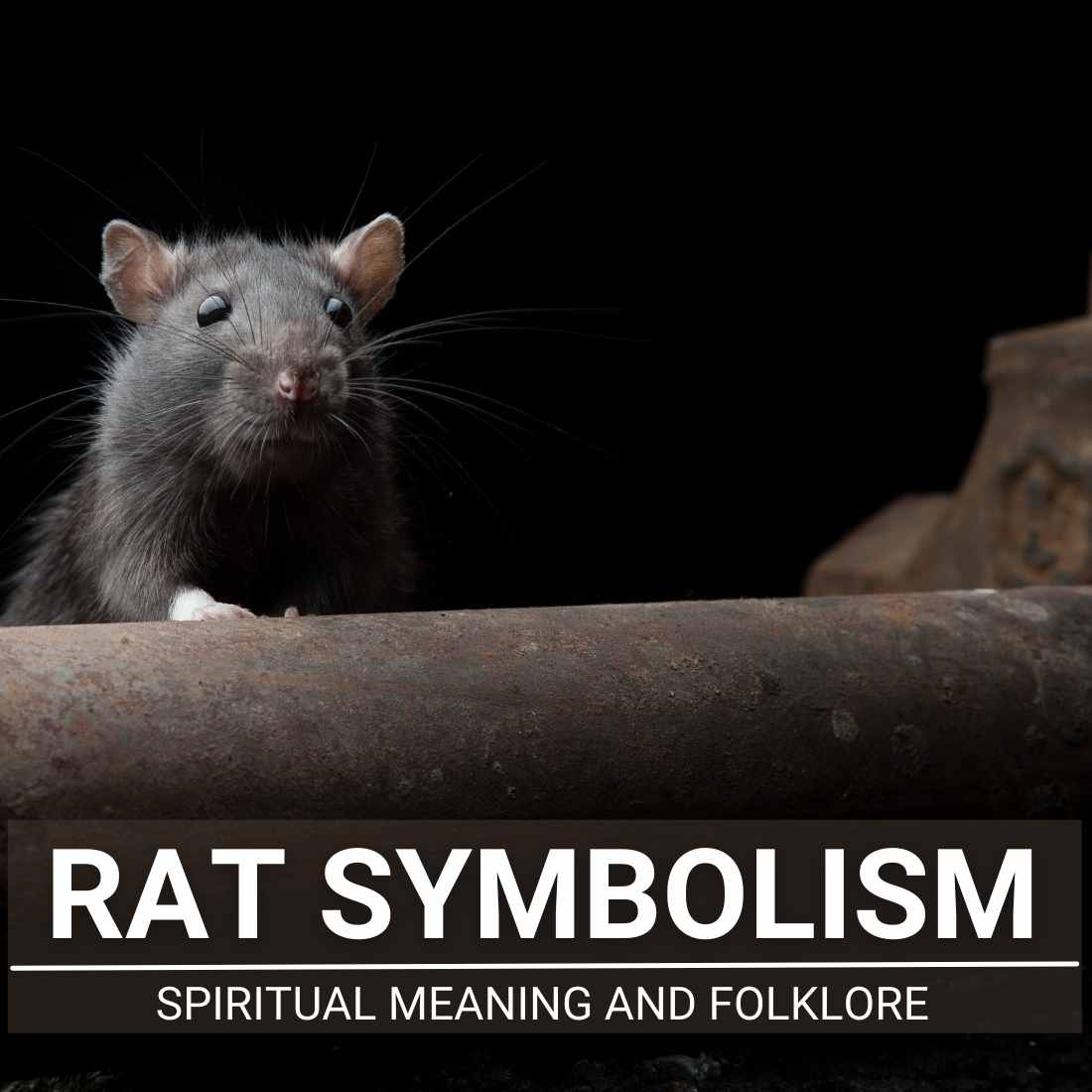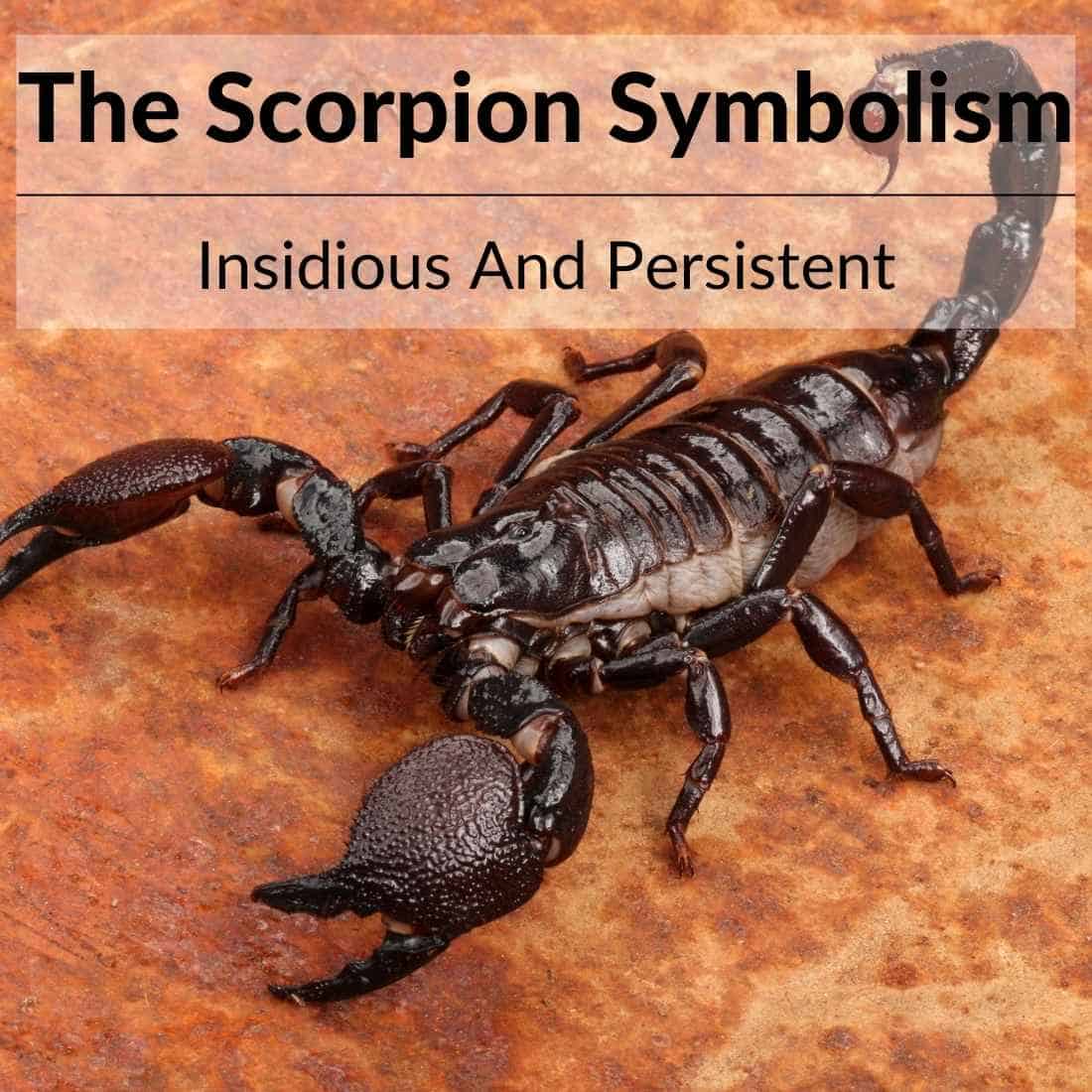Ever encountered a rat and felt an inexplicable connection? Rat symbolism, deeply rooted in cultures worldwide, might surprise you with its profound meanings.
Table of Contents
From ancient tales to modern interpretations, rats have been both revered and reviled. Dive in to uncover the mystique behind these creatures and discover why understanding rat symbolism might just change your perspective on life’s little surprises.”
“A rat is neither good nor evil. It does what a rat has to do.”
Jo Nesbo
Key takeaways
- Rats symbolize resourcefulness, adaptability, and intelligence across various cultures.
- Dreams of rats can offer insights into personal challenges and unresolved issues.
- Different cultures view rats as both positive symbols of prosperity and negative omens.
What does a rat symbolize?
Rats are often seen as dirty, disgusting creatures that live in dark places. However, they represent a host of symbolic meanings that you might find highly useful and spiritually significant.
Resourcefulness
Known for their resourcefulness in finding food and shelter, rats inspire us to use our creativity and ingenuity. They remind us to utilize our resources wisely and make the most of what is available.
Rats encourage us to find fresh solutions to the challenges that we may encounter. They teach us how to effectively take advantage of the resources available and find ways to overcome our obstacles.
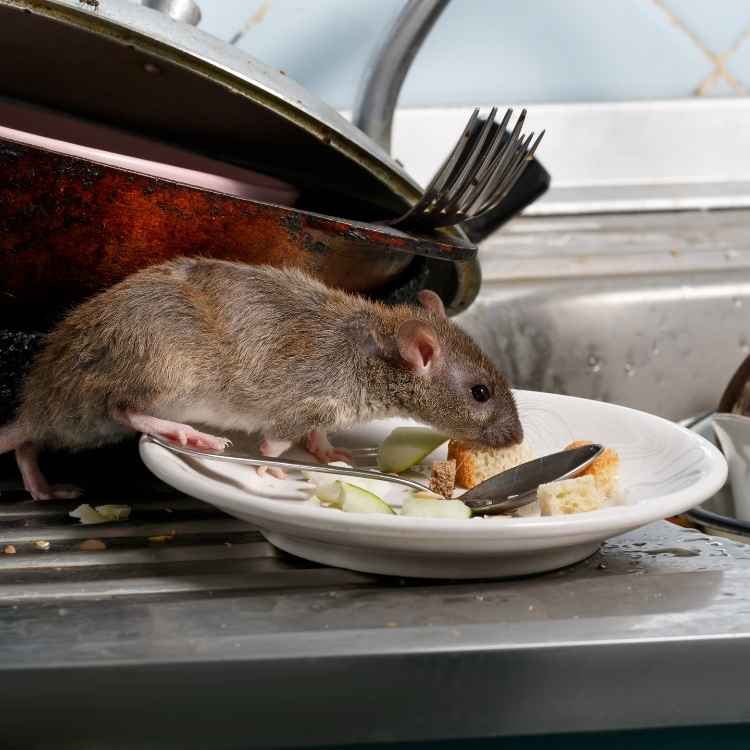
Adaptability
While they are often considered a notorious nuisance, rats are admired by some for their ability to adapt to various environments. Their presence motivates us to be resilient and flexible in life.
They help us find new ways to cope with our challenges and urge us to bounce back from our setbacks quickly.
Rats push us to grab fresh opportunities and pursue our goals in different ways. They encourage us to have a more positive mindset, as it leads to a greater sense of accomplishment.
Rats’ teeth never stop growing. They have to constantly gnaw on objects to keep their teeth from growing too long, a reminder of the need for continuous self-improvement and adaptation.
Intelligence
Rats are acknowledged as some of the most intelligent animals in the world. Because of this, they are often used in experiments and scientific research. They enhance our problem-solving skills and our ability to think creatively.
The presence of rats can motivate us to excel in school and the workplace, enabling us to find innovative approaches to tasks and challenges. They help pave the way for career advancement, a higher salary, and a more fulfilling professional life.
Rats have excellent memory and problem-solving skills. They can remember complex routes and solve puzzles, demonstrating the importance of adaptability and persistence in overcoming obstacles.
Also, it is believed that rats onboard the Titanic sensed the impending disaster and fled the ship before it sank, demonstrating their remarkable intuition and survival instincts.
Fertility
Notorious for their ability to produce up to 84 babies a year, rats are symbolic of abundance, fertility, growth, and expansion. These prolific breeders help create a strong sense of family and community, often bringing great joy and fulfillment.
The rats’ presence can stimulate a sense of financial stability, which helps reduce stress and anxiety. Apart from knowing that we can meet our basic needs, rats tell us that we can easily pursue our goals, which makes us less likely to be worried about the future.
The Virtue of Giving and Sharing
When we think of rats, kindness and generosity might not be the first attributes that come to mind. However, in the intricate tapestry of nature, rats stand out as symbols of kindness and generosity.
Their behaviors in communal settings offer a fascinating glimpse into their altruistic nature. In the dimly lit corners of urban landscapes and the hidden burrows of the wild, rats exhibit behaviors that challenge our preconceived notions.
Observations have shown that rats often assist their kin in need. Whether it’s sharing food, grooming one another, or even freeing a trapped companion, these creatures display a level of empathy that’s truly commendable.
Such acts are not mere coincidences but are deeply ingrained in their social fabric. Meditating on rat symbolism helps teach you to be more open to sharing and seeing yourself in others.
The significance of rats in different cultures
Let’s scamper into what rats mean in different cultures to know if the rat is a sign of good news or blessings.
Chinese culture
As the first animal in the Chinese zodiac, a rat that enters your home symbolizes prosperity, wealth, and good luck. Those born in the year of the rat are believed to be adaptable, clever, and resourceful.
In ancient times, rats were considered helpful creatures that protected crops and prevented famine. This led the Chinese to see them as a symbol of wealth and abundance.
Egyptian Culture
In Ancient Egypt, the rat’s ability to produce many offspring made it a symbol of fertility and abundance. They were often used in rituals that promoted agricultural growth and prayed for a bountiful harvest.
The rat’s nocturnal nature enabled the Egyptians to see them as creatures of the underworld. Believed to move between the worlds of the living and the dead, they were seen as mysterious and dangerous animals that brought death and bad omen.
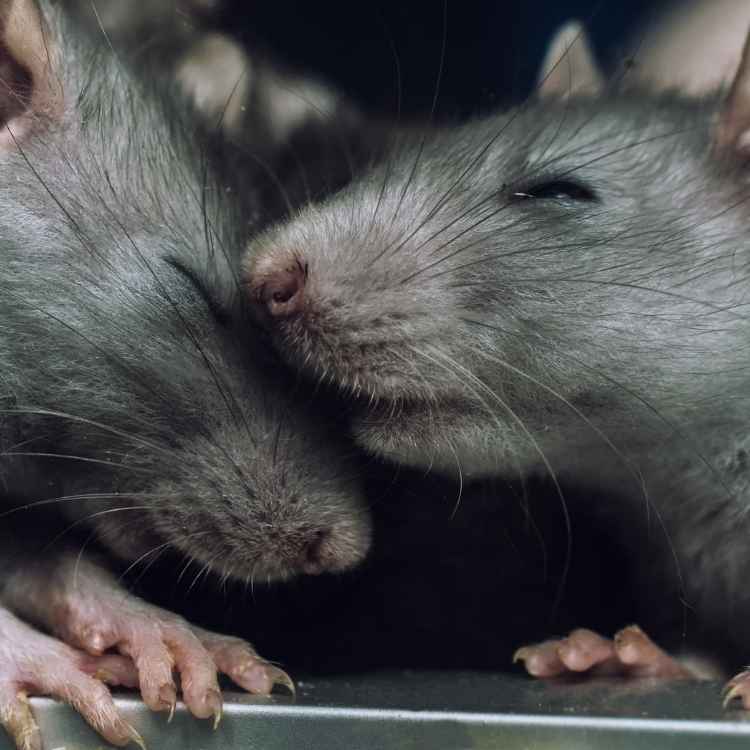
A rare phenomenon called a “rat king” occurs when a group of rats becomes intertwined at their tails, often due to sticky substances or tangled fur. Historically, this bizarre occurrence has been viewed as an omen of disaster or plague.
Rat populations exploded during the Great Plague of London in 1665 and contributed to the rapid spread of the disease. This reminds us of the delicate balance within ecosystems and the potential consequences of unchecked growth.
Native American culture
For Native Americans, the rat spirit animal is symbolic of adaptability and survival. However, several tribes view them as tricksters that deceive and mislead others.
On the other hand, others believe that its presence represents our willingness to challenge the status quo.
The rat totem is often used in rituals to heal physical and spiritual ailments. They are believed to possess a powerful medicine that has made significant contributions to transformation and healing.
Rats are medical heroes. They have been used in scientific research for decades, contributing to significant advancements in medicine and our understanding of various diseases.
Additionally, African giant pouched rats have been trained to detect landmines and tuberculosis, saving countless lives.
Hindu culture
Known for their fondness for food, regardless of how they acquire it, rats are believed to represent our desires and temptations in Hinduism. They remind us to resist our weaknesses, as it is the only way to achieve spiritual growth and enlightenment.
Also, the “Rat Temple” in Rajasthan, India, is a house of worship dedicated to Karni Mata, a Hindu sage who lived in the 14th century. It is known for housing a large number of rats that are worshipped by the devotees who visit.
Legend tells us that Karni Mata’s stepson drowned in a pond while attempting to drink from it. Karni Mate pleaded with the god of death to bring his stepson back to life.
The deity relented, allowing the boy and Karni Mata’s male descendants to be reincarnated as rats. Today, the rats in the temple are considered sacred and are treated with great care and respect.
Western Culture
According to numerous Western cultures, rats possess negative characteristics such as betrayal and disease. They are often considered pests that need to be wiped out.
However, they are also seen as a reminder to be resilient and use our talents to overcome challenges.
Often associated with sickness and contamination, they are believed to carry viruses and were blamed for the spread of the bubonic plague. They are seen as symbols of filth, disease, and affliction.
Rat Symbolism Quick View
| Culture | Positive Symbolism | Negative Symbolism |
|---|---|---|
| Chinese | Prosperity, Wealth, Good luck | None mentioned |
| Egyptian | Fertility, Abundance | Creatures of the underworld, Death, Bad omen |
| Native American | Adaptability, Survival | Tricksters, Deception |
| Hindu | Resisting temptations, Spiritual growth | Desires, Temptations |
| Western | Resilience, Overcoming challenges | Betrayal, Disease, Filth, Affliction |
Historical Evolution of Rat Symbolism
Ancient Civilizations
In ancient civilizations, rats held a dual symbolism. In Egypt, they were associated with destruction due to their tendency to destroy grain stocks. However, their rapid reproduction also made them symbols of fertility.
Medieval Europe
During the Middle Ages in Europe, rats became infamous for the Black Plague. They were seen as harbingers of disease and death. This negative symbolism persisted for centuries, overshadowing their earlier, more positive associations.
Renaissance to Modern Day
As societies progressed, so did the understanding of rats. The Renaissance period saw a slight shift, with rats being used in art to symbolize both decay and the inevitability of death. In modern times, while still often viewed as pests, rats are also recognized for their intelligence and have even become beloved pets for many.
In tracing the journey of rat symbolism, it’s evident that societal views on this creature have evolved, reflecting the changing dynamics and understanding of the world around us.
Rats in Western Mythology and Folklore
The Pied Piper of Hamelin (Germany)
One of the most famous tales from Western culture is the legend of the Pied Piper. In the town of Hamelin, rats had overrun everything, causing distress among the townspeople. The Pied Piper, with his magical flute, was promised a fee to lure the rats away. He played a tune that enchanted the rats, leading them into the Weser River, where they drowned.
However, when the town refused to pay him, he used his flute’s magic to lead the children away, never to be seen again. This tale serves as a cautionary story about the consequences of breaking promises. Read more about the Pied Piper.
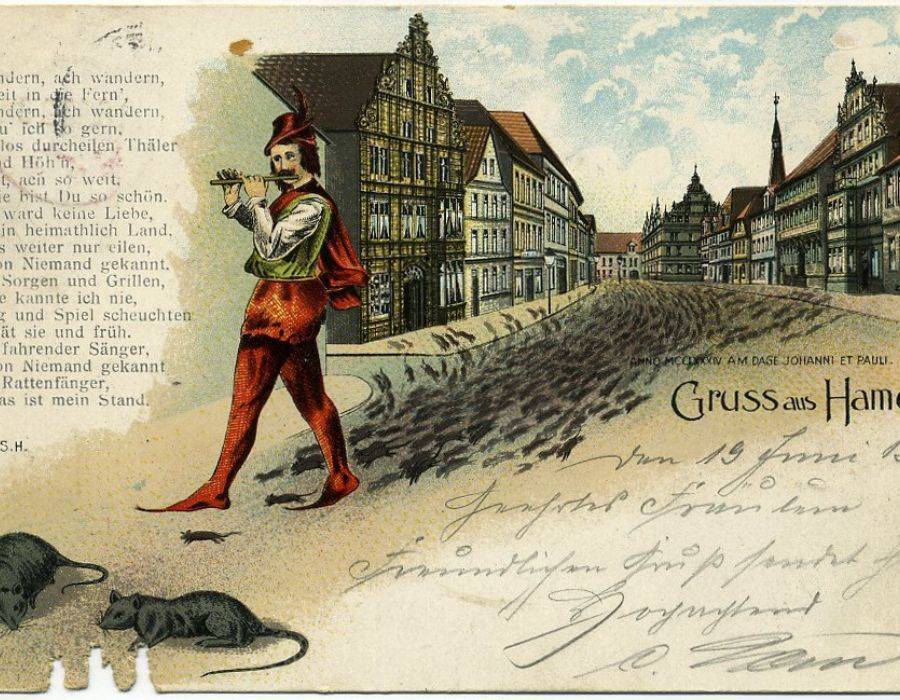
Rats and Witches (Medieval Europe)
During the Middle Ages, rats were often associated with witches and dark magic. It was believed that witches could transform into rats or use them as familiars to carry out their bidding.
Tales of rats associated with witchcraft were common, emphasizing the fear and superstition of the times. These stories often painted rats as creatures of the night, linked to malevolent forces.
Rats in Literature (Modern Era)
In more recent times, rats have been portrayed in various lights in literature. For instance, in George Orwell’s “1984,” rats symbolize the protagonist’s deepest fears, representing the oppressive regime’s power to exploit individual phobias.
Meanwhile, in Brian Jacques’ “Redwall” series, rats are often antagonists, but their characters are fleshed out, showing depth and complexity.
These tales and representations from Western culture highlight the multifaceted nature of rats, from harbingers of doom to complex characters with intricate motivations.
Spotlight on Rats: Movies Where Rodents Steal the Show
“Ratatouille” (2007)
In this heartwarming Pixar animation, Remy, a rat with a passion for cooking, forms an unlikely alliance with a young kitchen worker in a renowned Parisian restaurant. Together, they navigate challenges to achieve their culinary dreams. The film beautifully portrays rats in a positive light, emphasizing themes of friendship, ambition, and breaking societal norms.
“Willard” (1971 & 2003)
This cult classic, which was remade in 2003, tells the story of a socially awkward man named Willard who befriends rats in his home. He soon discovers that he can command them, leading to dark and tragic events. The rats, especially a white one named Socrates and a large one named Ben, play central roles in the narrative. Read more about Willard.
“The Secret of NIMH” (1982)
Based on Robert C. O’Brien’s novel “Mrs. Frisby and the Rats of NIMH,” this animated film delves into the story of a field mouse seeking the help of genetically modified rats to save her family. The rats, having escaped from a laboratory (NIMH), have developed advanced intelligence and society. Watch The Secret of NIMH.
“Ben” (1972)
A sequel to “Willard,” this horror film focuses on the titular rat, Ben, who leads his fellow rats in a violent revenge spree. The movie is notable for its theme song, “Ben,” performed by Michael Jackson, which became a hit single. Watch Ben.
These films, spanning genres from animation to horror, showcase the versatility of rats as central characters, each offering unique perspectives on the relationships between humans and these often-misunderstood creatures.
What does it mean to dream of rats?
Dreaming of rats can be a perplexing experience, often laden with symbolism and hidden meanings. These nocturnal visions might be hinting at various aspects of your life:
- Self-reflection: Rats may indicate something you need to eliminate from your life.
- Manipulation Alert: They can suggest someone is trying to exploit you.
- Mystical Messengers: Rats might symbolize messengers from the underworld, hinting at upcoming changes.
- Beware of Deceit: Especially from those close to you.
- Inner Darkness: Representing self-destructive tendencies within.
- Heed the Warning: Rat symbolism can urge action against negative behaviors.
- Freud’s Interpretation: Rats might symbolize siblings and unresolved childhood issues.
- Erotic Undertones: Their phallic shape can indicate erotic dreams.
- Cultural Significance: White rats might symbolize prosperity, while black rats could indicate deceit or danger.
Deciphering these dreams can offer profound insights into one’s psyche and surroundings.
Conclusion
In the vast tapestry of symbolism, rats stand out as creatures of profound depth and duality. From being seen as symbols of resourcefulness, adaptability, and intelligence to their roles in dreams and cultural narratives, rats challenge our perceptions.
They bridge the gap between the physical and spiritual realms, urging us to confront our innermost fears and desires. Whether you view them through the lens of ancient cultures, modern interpretations, or personal dreams, rats compel us to reflect, adapt, and grow.
As Jo Nesbo aptly put it, a rat does what it has to do, reminding us of the innate drive within us all.
